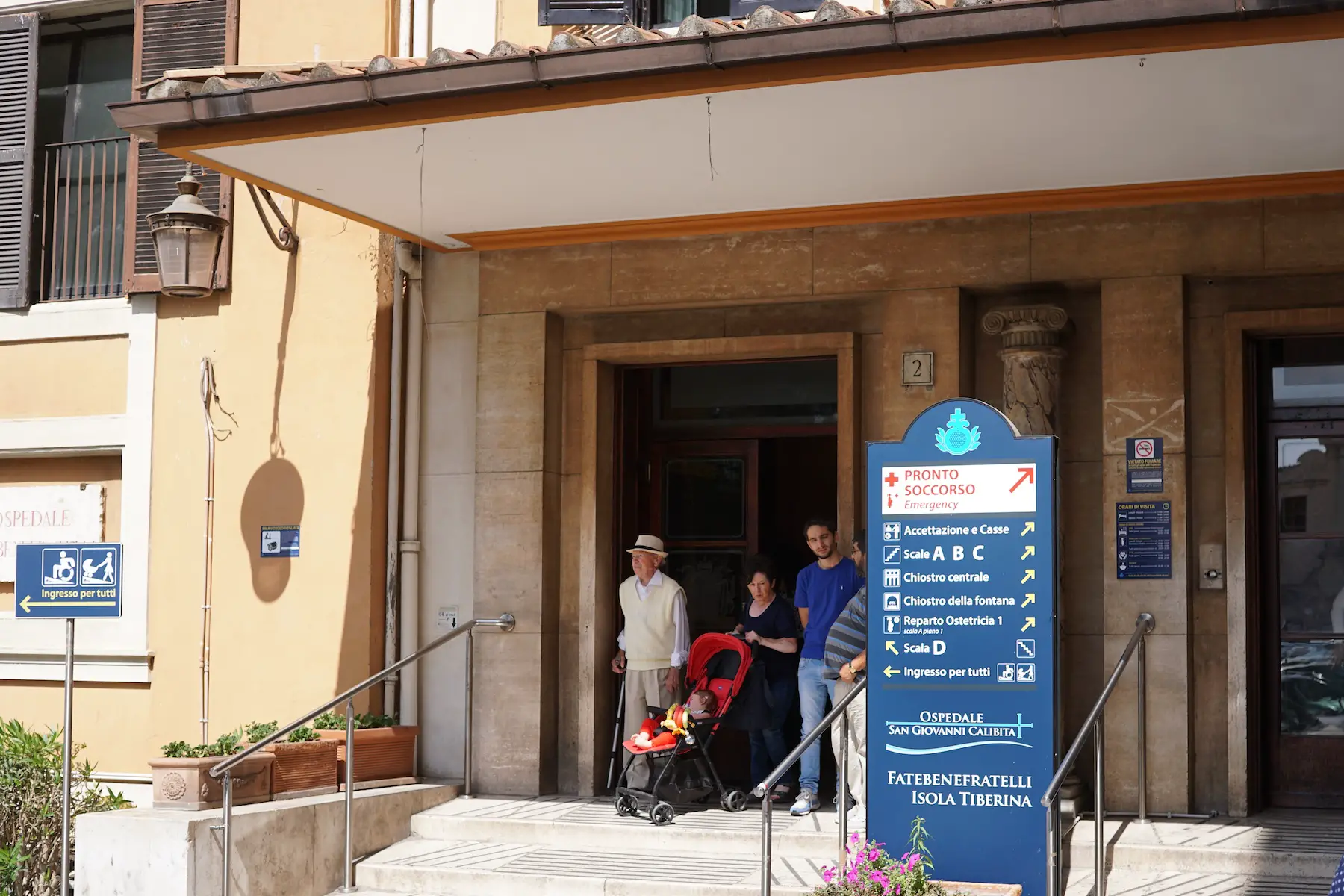When moving to Italy, you’ll want to know where to access medical care close to home, including the nearest hospitals and emergency rooms. Italy has a vast public healthcare system, as well as a selection of private hospitals, doctors, and clinics. You can expect hospitals run by the Italian government to have distinct costs and services compared to private centers. They also provide different levels of care, so it’s important to choose wisely when it comes to your medical treatment.
Dive into all the necessary information on Italian hospitals, including:
Cigna Global
Want access to the best private medical services in Italy? Speak to the healthcare professionals at Cigna Global today and find a policy that’s right for you. Take advantage of their global network of doctors, specialists, therapists and more with coverage tailor-made for you and your family. If you’re starting a new life in Italy, get peace of mind with Cigna Global.
Hospitals in Italy
Italy’s healthcare system is well known for its efficiency and affordability, and Italian hospitals offer high-quality care for everything from routine procedures to emergency visits.

80% of all hospitals in Italy are public facilities, leaving a small percentage of private centers, mostly run by religious groups. You will find that most Italian hospitals offer specialist care, including cardiology, gynecology, gastroenterology, and more.
Italy’s emergency rooms, or pronto soccorso, run on a priority-based system, meaning more urgent cases have quick or immediate access. The maximum wait time for non-urgent cases is 240 minutes, according to the Servizio Sanitario Nazionale (SSN). The wait time depends on urgency and availability for specialist visits or outpatient surgeries, but can vary from the same day to a few months.
How to access Italian hospital treatment
While anyone can access hospital treatment in Italy, medical care is affordable or free if you live in the country.
If you are a tourist visiting Italy and in need of emergency care, the SSN covers basic hospital treatment for foreigners. All residents of Italy must register with the SSN, choose a general practitioner, and get their health card or tessera sanitaria to access healthcare services. When visiting a hospital in Italy, whether you go to the ER or just for an outpatient appointment, you must bring your ID and health card.
If you wish to make an appointment with a specialist for free or for a small fee known as a ticket, in a public hospital, you will need a referral from your doctor. When making the appointment, the hospital will ask you for your information and the details of your referral. You will pay the full price for private hospitals or specialist visits without a referral, which varies between medical centers.
How you make an appointment with a public hospital or medical facility varies between regions, but usually, you can book a visit through the Centro Unico Prenotazione (CUP). The SSN runs this service on a regional level, so patients book medical visits over the phone, online, or in person. You can contact private clinics to check availability and book an appointment.
Emergency treatment in Italy
If you find yourself in need of emergency treatment in Italy, visit your nearest pronto soccorso. You can also call 112, the generic emergency number, or 118, the number for medical emergencies. Anyone in Italy can access emergency treatment even without documentation.

Once you arrive, the triage will ask you questions to understand the severity of your condition. Next, the nurse will assign you a color code based on urgency which will also determine how quickly a doctor can see you:
| Code color | Meaning | Wait expectancy |
| Codice rosso (code red) | Life-threatening emergency | Patient to be seen right away |
| Codice arancione (code orange) | Urgent risk of losing vital functions or severe pain | Access within 15 minutes |
| Codice azzurro (code light blue) | Urgency is deferrable, patient is stable but requires complex services | Access within 60 minutes |
| Codice verde (code green) | Minor urgency requiring simple diagnostic services | Access within 120 minutes |
| Codice bianco (code white) | Non-urgent problem | Access within 240 minutes |
Hospital admission is usually free but may require a small co-pay fee. If you are an EU resident, bring your European Health Insurance Card (EHIC). It is also important to note that although hospitals have a maximum wait time, patients may wait far longer for non-urgent care if the hospital is busy.
Italian hospital stays: what to expect
Hospital rooms in Italy tend to be shared, usually between two people, but patients can request a private stay at a fee. For some fragile patients, a private room is medically necessary at no extra cost. Hospital rooms often have things to make the stay more comfortable, including visitors’ seats, televisions, and a bathroom. You can also expect meals served to your bed.
Hospitals in Italy have strict visitation rules, especially since the COVID-19 pandemic. Visitors can only come at certain times and follow all current health and safety protocols, such as wearing a mask. Some hospitals or care facilities require a negative COVID-19 test before your hospital stay or visit.

If you wish to stay in a more comfortable and private environment at a cost, you may prefer a private hospital. Private insurance can cover part or all of the fees associated with your hospital stay.
Hospital costs in Italy
Although Italy has a public tax-funded healthcare system, some specialist visits or hospital stays require a small fee known as a ticket. The amount varies depending on the region but cannot cost more than €36.15 in most areas.
Health insurance for hospital costs
If you visit a public hospital in Italy, you will most likely walk away with only a small ticket fee to pay. After discharge, you can make payments at a self-service machine or the front desk. If you wish to pay later, the hospital will let you know the deadline and payment methods. The Italian healthcare system also has some categories of individuals exempt from copayments, such as:
- Certain low-income families
- People with certain chronic or rare diseases
- People with disabilities
- Pregnant people
- Children under 14, depending on household income
- People 65 and older, depending on household income
If you visit a private hospital without insurance, you might have to pay thousands of euros in medical fees. Looking into a health insurance plan is a good idea if you plan on choosing a hospital outside of the public healthcare system. You can choose from one of the following international health insurance providers offering coverage in Italy:
Being discharged from Italian hospitals
Hospital discharge procedures may vary, but you can expect the doctors or nurses to let you know when it’s time to go home. Your doctor will sign the discharge paperwork and give you instructions for any further medical treatment. Although you might be cleared to go home, hospital staff may book you a follow-up appointment before you leave.
It is customary in Italy for doctors to call patients to check how they are doing after a long stay or surgery. Anyone over 18 has the legal power to leave the hospital and ask to be discharged, although it is best to follow your doctor and nursing team’s guidelines. If your child is to be released, they must have a legal guardian present for the paperwork.

Each hospital has its procedures regarding co-pay fees, but usually, you can pay directly at the hospital when you leave or from home within the necessary timeframe. For private hospital stays, the payment process varies depending on the facility.
Visiting someone in hospital in Italy
If you wish to visit someone in the hospital, there are some rules to follow, which vary by facility. Because of the COVID-19 pandemic, guidelines continue to change, but you can check the hospital’s website to stay updated on any mask, testing, or vaccine regulations for visitation.
Usually, hospitals have visitation blocks in the afternoon and early evening, for example, from 15:30–19:00. Friends and family members are welcome. Still, hospitals limit the number of people allowed at the same time. Children can have a family member or legal guardian present 24 hours a day.
To keep everyone safe, some facilities may require masks or COVID-19 testing to visit. If you plan on bringing the patient food, gifts, or flowers, contact the hospital beforehand about any restrictions.
The best Italian hospitals
According to a 2022 ranking by Newsweek, the best hospitals in Italy are:
- Policlinico Universitario A. Gemelli – Located in Rome, this public university hospital ranks 1st in Italy and 38th worldwide. Although the hospital is public, it also offers some private outpatient services. The Gemelli Hospital specializes in many branches of medicine, including oncology, cardiology, and gastroenterology. Some of the new additions to the hospital include the Advanced Oncological Radiotherapy Center, a new Cardiac Surgery Intensive Care Unit, and the Digestive Disease Center (CEMAD).
- Grande Ospedale Metropolitano Niguarda – This public Milan hospital ranks 2nd in Italy and 60th worldwide. The Niguarda Hospital specializes in advanced surgical procedures and techniques, including pediatrics. Doctors there are also trained to care for patients with rare or complicated diseases. It’s no surprise that this state-of-the-art hospital also leads in medical research.
- Ospedale San Raffaele-Gruppo San Donato – This private Milan hospital ranks 3rd in Italy and 64th in the world. Both a university and research hospital, it is the country’s largest private hospital. The San Raffaele treats 1.5 million patients each year using a multidisciplinary approach to medicine with over 60 highly specialized clinical units.
- Policlinico Sant’Orsola-Malpighi – This public university hospital, located in Bologna, ranks 4th in Italy and 65th in the world. They are highly specialized in multiple medical branches, but continue to show excellence on an international level for oncology and transplants. With 87 specialized clinical units, this hospital has over 3 million outpatient visits and 49,000 hospitalizations each year.
Useful resources
- Servizio Sanitario Nazionale (SSN) – Italy’s national healthcare service
- Emergency Department in Italy – priority coding and waiting times for Italian emergency rooms
- Tessera sanitaria – information on Italy’s national healthcare card
- European Health Insurance Card (EHIC) – information on what the EHIC is and how it works





